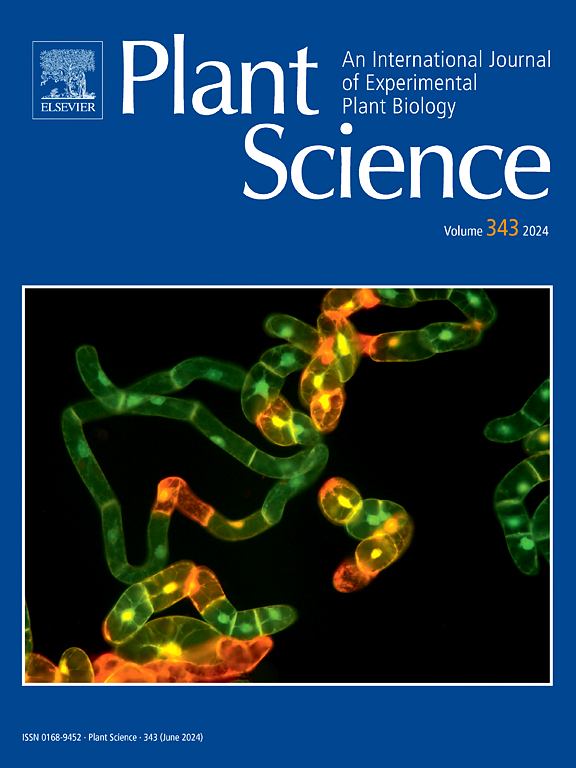Cryptochromes (CRYs) in pepper: Genome-wide identification, evolution and functional analysis of the negative role of CaCRY1 under Phytophthora capsici infection
IF 4.2
2区 生物学
Q2 BIOCHEMISTRY & MOLECULAR BIOLOGY
引用次数: 0
Abstract
Cryptochromes (CRYs) are ultraviolet-A (UV-A) and blue light photoreceptors that perceive UV-A and blue light to mediate a range of physiological processes including disease response in plants. However, there has been no report about the roles of CRY genes in pepper, which often suffers from Phytophthora blight caused by Phytophthora capsici. In this work, three pepper CRY genes were identified and their characteristics were examined by bioinformatics analysis. CaCRY1 is an ortholog of AtCRY1 located in the cytoplasm and nucleus, and expression analysis by RT-qPCR showed that its transcription was differentially regulated by jasmonic acid (JA) and salicylic acid (SA), as well as by P. capsici infection (PCI). Overexpression of CaCRY1 in pepper and Nicotiana benthamiana promoted the susceptibility of plants to PCI. Further virus-induced gene silencing (VIGS) analysis showed that silencing of CaCRY1 promoted the resistance of pepper plants to PCI with decreased disease index and transcripts of genes associated with SA biosynthesis. RNA-seq analysis showed that CaCRY1 silencing affected many genes in stress-related metabolic pathways. In summary, our findings show that CaCRY1 plays a negative role in the defense response of pepper to PCI, laying a foundation for studying the roles of CRYs in the future.
求助全文
约1分钟内获得全文
求助全文
来源期刊

Plant Science
生物-生化与分子生物学
CiteScore
9.10
自引率
1.90%
发文量
322
审稿时长
33 days
期刊介绍:
Plant Science will publish in the minimum of time, research manuscripts as well as commissioned reviews and commentaries recommended by its referees in all areas of experimental plant biology with emphasis in the broad areas of genomics, proteomics, biochemistry (including enzymology), physiology, cell biology, development, genetics, functional plant breeding, systems biology and the interaction of plants with the environment.
Manuscripts for full consideration should be written concisely and essentially as a final report. The main criterion for publication is that the manuscript must contain original and significant insights that lead to a better understanding of fundamental plant biology. Papers centering on plant cell culture should be of interest to a wide audience and methods employed result in a substantial improvement over existing established techniques and approaches. Methods papers are welcome only when the technique(s) described is novel or provides a major advancement of established protocols.
 求助内容:
求助内容: 应助结果提醒方式:
应助结果提醒方式:


